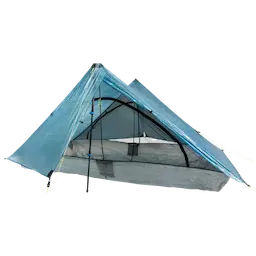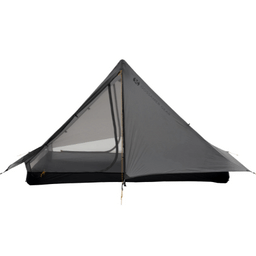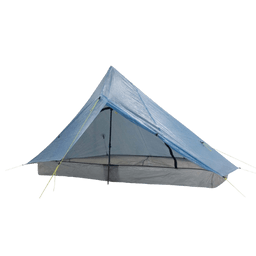Choosing a tent for your thru-hike is highly personal, most would think that going the lightest possible would be best in many cases you will want to think more deeply about what you enjoy in a home as it will be yours for months.
Do you need lots of space to not feel claustrophobic or are you ok in an enclosed space, are you trying to sit up and relax inside the tent, and if so does the tent you are looking to buy give you enough headspace in the first place?
Many are incredibly fresh when they choose to go on a thru-hike and they miss thinking about these very important questions before making a purchase, I would hope that since you are here you will make a better choice!
There is a wide array of high-quality tents available for a thru-hiker, from big businesses like Big Agnes to cottage companies like Zpacks and many more. Let’s start helping you find the right option for your trek today!
As an Amazon Associate, I earn from qualifying purchases on our website. In addition, we include many other affiliates’ offers on the site.
Best Overall

Zpacks Duplex
Palatial Living Space
Single-Wall
Dyneema Waterproof
Best SilNylon

Gossamer Gear “The Two”
Zippered Main Door
Single-Wall
Better on Budget
Best Ultralight

Zpacks Plex Solo
Single Trekking Pole
Sub ONE POUND
Single-Wall
My Best Tents for Thru-Hiking
- Zpacks Duplex (Best Overall Performance, Thru-Hiker Favorite)
- Zpacks Plex Solo (Best for Ultralight Backpackers)
- 3F UL Lanshan 2P (Best for Budget Backpackers)
- Gossamer Gear “The Two” (Best Inner Space by Weight)
- NEMO Hornet Elite 2 (Best (SEMI) Freestanding Option)
- Dan Durston X-Mid 1P (Best Upcoming Brand)
- REI Flash Air 2 (Best Value-Option Hybrid Single Wall)
- Tarptent ProTrail Li (Ultra Lightweight 1P Dyneema Under 1 Pound)
- Tarptent StratoSpire Li (Best for Double Wall Dyneema)
- BigAgnes Copper Spur UL2 (Lightest Freestanding Tent)
10 Best Tents for Thru-Hiking
Now that you have seen my list of the top 10 thru-hiking tents let’s dig into each and explain why I chose to rate them there and why they may be a perfect match for you and your long-distance hike.
Best Overall Performance

Zpacks Duplex
- The Zpacks Duplex Tent is an excellent tent for thru-hiking due to its weight and waterproof fabrics. It only weighs 19.4 ounces and is made of Dyneema Composite Fabrics.
- The Duplex has two doors, two vestibules, and needs the use of two trekking poles. Despite its amazing layout and design, the Duplex is a very simple tent to put up and use, which is probably why it’s arguably the most popular tent on trail.
The Duplex is a lightweight, high-strength, highly waterproof fabric that makes it ideal for making tents and shelters since it does not absorb water or stretch during the night. The fabric is called Dyneema Composite Fabrics (DCF), a lightweight, high-strength, highly waterproof fabric that makes it perfect for this use.
While the Duplex is a two-person tent for thru-hikers on the trail this is a one-person with space to spread out on the trail. Having space to layout gear and move around is highly valued when you are truly living on the trail and just like a house, a little more space is never a bad thing.
This is a single-wall tent which does mean you will face condensation internally and possible water drips overnight if the ceiling should shake more move lot, some people find this a big downside to a single wall tent and a reason why they don’t purchase a DCF tent as this are very commonly single-wall constructs.
Best for Ultralight Backpackers

Zpacks Plex Solo
- This tent takes 6 or 10 stakes to set up, depending on the weather. In windy circumstances, you may use as many as 10 stakes. The walls are also pushed out with additional stakes, allowing for greater internal volume.
- Storm doors can be independently opened and closed. Leave one or two doors open when it’s nice outside. Close the upwind door on a windy day, or close both if it is raining. The storm doors are closed with metal hooks that have a toggle in the middle to hold them together.
The Plex Solo is an ultra-light and roomy tent that can help you take your treks to the next level. This tent allows you to put in more miles without harming your body, whether you’re on a thru-hike or getting the most out of those two weeks away from the cubicle.
The peak on this lightweight tent provides extra height without requiring the use of a second trekking pole to pitch it. While still allowing the tent to pack up small, the extremely strong titanium peak structure stays in place during usage.
The Plex Solo is highly ventilated and may be used in even the tightest of camping locations. There’s no lighter one-person tent out there.
Best for Budget Backpackers

3F UL Lanshan 2P
- The 3F UL GEAR Lanshan 2 is a popular two-person tent that is among the most cost-effective ultralight tents available on the market. The new 2021 version offers increased room to be more comfortable for individuals who are taller.
- The Lanshan 2 is built to last and is suited for all conditions and activities. It’s especially made for UL hikers.
Solo hikers will appreciate the perfect balance between internal space for rest and pack breakdown at night and its overall lightness.
With enough room for both and a separate entrance and vestibule for each, the Lanshan 2 can easily accommodate two people or one thru-hiker with all their gear inside.
The flys’ bottoms curved, allowing for continuous air circulation and the reduction of moisture buildup which can be the bane of drying a tent out in the morning.
The tent body is a 5000mm waterproof PU coating over silicone-treated nylon ripstop. All seams are sealed with waterproof, solvent-free polyurethane tape.
Best Inner Space by Weight

Gossamer Gear “The Two”
- The Two has the capacity to hold two people and is light enough for you to carry without weighing you down. The following are some of the features: pre-sewn seams, bright pull-outs, robust zippers, and fully rigged lines.
- The Two is also lightweight and simple to deploy, strong, roomy, and weighs less than 2 pounds. Both sides include doors for easy access and maximum ventilation.
The Two is lightweight, with full protection from rain and bugs, factory-taped seams and the main body and floor have 1800mm waterproof UTS coating.
It also features great headroom (and shoulder room) and is built to fit tall people while providing a big vestibule with great protection and easy side entry.
Best (Semi)Freestanding Option

NEMO Hornet Elite 2
- One of the LIGHTEST tents which use poles available for a thru-hiker or backpacker to purchase.
- Amazing twin side doors allow much room to maneuver with a second person, or to adapt the tent to the tent spot for a single person on a long trail.
The NEMO Hornet Elite is a two-person tent that offers all of the benefits of a sem-freestanding shelter. Its simple set-up and lightweight design earned it our praises for its ease of use. While you’ll have to cut corners on interior space, the twin vestibule design makes it easy to cook food while on the trail.
Nemo has done a wonderful job utilizing the area by adding extra guy-out lines around each entrance to increase the lateral space at shoulder level. Its maximum interior height of 37″ is a few inches lower than many comparable 2P tents and 3 inches lower than the classic Hornet.
The tent body is a neutral grey with yellow accents, but the fly is Nemo’s premium yellow or what they call “Elite Yellow”, making it far less stealthy than most other backpacking tents.
The Hornet Elite is one of the lightest UL tents on the market, with a minimum weight of 1 pound 11 ounces. It’s also incredibly light for a double wall, dedicated pole tent, weighing so little trekking pole tent owners may be envious.
Best Upcoming Brand

Dan Durston X-Mid 1P
- The FASTEST tent to pitch available on the market, my favorite tent for my outdoor trips!
- Incredibly spacious interior due to the unique outer and inner construction being a parallelogram instead of just squared off allowing much taller people to fit!
The X-Mid 1P pitches with as little as 2 trekking poles and 4 stakes, this makes it incredibly simple to pitch and get you ready to relax in comfort.
The X-Mid is a robust, roomy, and stormworthy boat, while anything lighter is smaller, less functional, and/or uses less durable materials.
The X-Mid 1 is roomy, simple to set up, and stormworthy for only 1.75 lbs (28oz / 800 g). It performs well in the rain thanks to a fly-first pitch, full double-wall construction, no-sag poly fabric, large adjustable vents, factory seam taping, a full-coverage fly.
Unlike most trekking pole tents, the X-Mid features a straightforward 4 stake pitch that doesn’t require any guylines, struts, or measuring pole heights. With huge doorways that aren’t obstructed by poles and simple one-handed zipper operation, the user-friendliness continues after setup.
Value-Option Hybrid Single Wall

REI Flash Air 2
- The poles of the almost 90° hubbed roof provide more headroom and space.
- The fly/vestibule protects your stuff in bad weather and then rolls up over the roof when nice outside it allows for stargazing or a large awning.
A hybrid single-wall design exposes the tent interior more directly to condensation, as with any other single-wall tent which means there is always some level of condensation.
If you leave out the two vertical poles and utilize your trekking poles instead, it weighs 1 lb. 15 oz. Making it a very strong pick as a thru-hiking value choice.
This tent offers plenty of room for a tent that is only 2 pounds and has two doors and vestibules to stretch out in. It’s windproof and waterproof in adverse conditions.
Ultra Lightweight 1P Dyneema Under 1 Pound

Tarptent ProTrail Li
- The Tarptent ProTrail Li is a 15.95-ounce single-wall Dyneema trekking pole tent that can be set up in just a few minutes by one person. This allows you to pitch the fly “high” so that air may flow through the mesh, or “low,” to prevent wind-swept rain from being
- A very basic A-frame rainfly with a floating bathtub floor that is connected to the sidewalls and ends using a noseeum mesh.
Even on hot and humid nights, or during a rain shower, being a single wall tent allows for extra ventilation to keep any internal condensation and moisture levels at bay.
The ProTrail Li is ideal for trekking pole users looking for the greatest lightweight and protection in a shelter. The ProTrail Li is elegant and durable, fitting any long-distance ultralight tent.
In addition, it is incredibly simple to set up as it only requires 4 stakes to set up. It offers a surprising amount of headroom, this space makes it much more simple to get dressed or undressed inside, and the bathtub floor is broad enough that you can sleep with most of your gear beside you.
Best for Double Wall Dyneema

Tarptent StratoSpire Li
- The Tarptent StratoSpire Li is, at its core a highly adaptable tent. The clip-in points make it simple to remove the floor and bug net. They offer a huge variety of purchasing choices to adapt to your needs.
- Amazingly resilient in inclement weather, able to weather the worst conditions you can throw at it!
The tent is light, handles moisture well, and is waterproof. Finding places to set up the tent is pretty simple, and in many cases you will not need a footprint.
This tent features two vast vestibule areas. They are exceptionally useful in bad weather because they have room for your gear and you can cook inside while staying dry.
The Stratosphere is a very good tent. It’s easy to live in and it’s also good for people who like to travel and go places that might have bad weather.
Lightest Freestanding Tent

BA Copper Spur UL2
- The tent has been fully redesigned from the inside and outside. It is made with new materials that are lighter, stronger, and easier to set up.
- Awning-style vestibules may be expanded to provide more living area, making them ideal for rain and sun protection. Your ideal UL getaway spot.
The Copper Spur HV UL2 Tent is a great option for backpacking, designed with the wilderness enthusiast in mind. The high-volume design makes it livable when we’re waiting out storms or just relaxing after an active day exploring nature’s trails!
Weighing in at less than three pounds; this lightweight shelter won’t slow you down on your next long-distance journey through the trail from end to end in full-on comfort.
How to Choose a Tent for Your Thru-Hike
When you are deciding on what tent will work best for your thru-hike you have many things to consider before making your important purchase, each item can be a make or break for you and your enjoyment while out on the trail.
For some this is going to be based on how it can fit in a backpack, others will worry about the weight as the highest importance. Some will gravitate towards freestanding tents over trekking pole-style tents, others may care more about the space or materials.
This is all why you want to understand all the factors and which ones will be the most important to you and your choice. Let’s jump into each and give you some information on what they are and why they would matter.
Tent Setup
There are three main types of tents that someone will have, freestanding, semi-freestanding, and trekking pole tents. Each of these has some pros and cons but people are typically more comfortable with one of the three.
Types of Tents
Freestanding – These tents require no tent stakes with the tent body and the rainfly ending along the tent body or the tent poles, there are not many options available in this type for backpacking use. Can be adjusted easily as you can pick up and move the entire tent without removing tent stakes for optimum camp placing.
Semi-Freestanding – Very similar to the above tents but you have tent stakes which are used to tighten up the rainfly and give full protection to the tent and vestibule area. This can be easier to move around the camp area for best placement unlike the next option below.
Trekking Pole – This tent uses your trekking poles to stand upright, it has no ability to remain upright without the framework the trekking poles provide. This also makes re-adjusting and moving the tent a full breakdown and re-setup as the entirety of the tent is staked out to maintain shape.
Seasonality
As to seasonality, this will depend on when your majority of trips occur, there are a few options which are three-season, three-plus season, and four-season. Choosing which will fit your needs and the weather you will expect will change the way it holds heat and breathes.
Three Season
This style of tent will often feature a rainfly made of solid material and an inner tent material which will be made from a no-see-um mesh, this allows you the most airflow possible which is very important when camping in warmer temperatures.
Three-Plus Season
Similar to the above tent but the walls will typically be a mix of solid material to block out some airflow but the rest are made from no-see-um mesh to allow some airflow to continue through.
Four Season
This tent style will have solid walls both inside and outside, this will block out nearly all breezes and will help conserve warmth non-stop in all weather. This can be critical in winter but also if you hike up high into mountains where severe cold is typical, not always just snow or inclement weather.
Livable AKA Internal Living Space and Capacity
While you live out on the trail you will want to have a space you can retreat to for some peace and quiet at times, for some people this space can be near cocoon-like and small and cramped, for others they need the biggest space they are willing to carry.
Key Specs To Think About:
- Floor Dimensions – The length and width measurements give a general indication of the floor surface size. Many tents do not have completely rectangular floors, so you may see measurements like 85″ x 51″ / 43″ (L x W head/foot). A tapered floor provides shoulder and arm room while also saving weight by having a smaller foot.
- Floor Area – This figure measures the total floor space in square feet. While this number is useful for comparing tents, it isn’t a reliable metric when measuring how well the area is utilized.
- Peak Height – When you sit up, no one wants to bang their head. However, peak height is measured at a single point, so don’t rely on this metric alone to assess overall clearance. Your personal test pitch and validation is a far superior method of determining overall space.
- Wall Angles and Shape – This is a far more significant aspect of tent livability than peak height. The higher the walls are, the more open the interior of the tent will feel. If you can’t go to a store to test pitch tents, look at the pitch of a tent’s walls in online photos.
Tent Weight
The weight of your tent is important as part of the big three it is one of your core areas to drop weight from your overall base weight. So you will want to look into the specific keys below as to tent specs that you should see how you align with and are willing to carry.
Understanding Tent Specs:
- Minimum trail weight – The total weight of the tent body, rainfly, and poles (the bare necessities). You will probably add more tent-related items like stakes, and a footprint, but this is the best spec level for overall comparison.
- Packaged weight – This is the total weight of all the components included in purchase: body, rainfly, poles, stakes, stuff sack pole sack, instructions, and other items. The combined weight you’ll carry on the trek will be between this and the minimum trail weight listed above.
- Packed size – The amount of room a tent takes up in your backpack also has to do with how easy it is to manage in a pack. For couples, you can look to decrease the amount of space needed by separating components and having your spouse take only the poles and rainfly, for example.
Materials
There are many materials used to make tents, some provide more water resistance, others provide better costs. Let’s take a few minutes and discuss the three most common materials used in making tents:
- Dyneema or DCF – First discovered on sailboats this fabric has amazing abilities like the ability to withstand water, incredibly lightweight, and pretty durable which makes it good for tents but it comes at a solid premium in the costs.
- Sil-Nylon – The most common fabric used for backpacking tents, solid and dependable, the only large downside is that it absorbs water over time and due to this it can sag and need to be tightened up after initial setup.
- Sil-Poly – Very similar to Sil-Nylon above but doesn’t absorb water so once set up you won’t have to worry about sagging from water absorption, though from my understanding this fabric is a little more expensive it is near in line with Sil-Nylon.
How the Tent Fits in Your Backpack
This may be fairly small to some but how you want to load your backpack is important and some tents can be very tall when in their sack. This can be an issue if you prefer to put your tent horizontally, as is my preference, as this allows for a simple stacking of gear.

